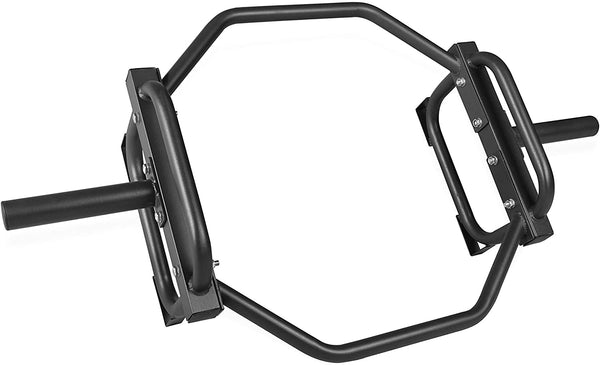Your Cart is Empty
December 27, 2023 3 min read
Squats are one of the most fundamental exercises for building a strong lower body. They are often done with a barbell, but there is another option – the hex bar squat. This type of squat allows you to place more emphasis on your glutes and hamstrings, which can help to increase your strength and power.
Shop The Collection: BarbellsThe hex bar squat is often overlooked by gym-goers, but it is an essential exercise for anyone looking to build a strong and powerful lower body. In this article, we’ll explain why hex bar squats are so important and how to do them correctly.
 Shop The Gear: CAP Barbell Olympic Trap Shrug Bar, $99.99 USD
Shop The Gear: CAP Barbell Olympic Trap Shrug Bar, $99.99 USD
A hex bar squat is a variation of the traditional barbell squat. It uses a hexagonal-shaped bar (also known as a trap bar) instead of a straight barbell. The main difference between the two is that the hex bar allows you to stand in the middle of the bar, rather than behind it.
In addition to allowing you to stand in the middle of the bar, the hex bar also has handles on either side. This lets you perform the exercise in a more upright position, which helps to reduce stress on your lower back and makes it easier to keep your spine in a neutral position.
Hex bar squats provide several advantages over regular barbell squats. Here are some of the benefits:
Now that you know the benefits of hex bar squats, let’s look at how to do them properly. Follow these steps for the best results:
As with all exercises, there are certain mistakes to avoid when doing hex bar squats. Here are some of the most common errors:
Hex bar squats are an essential exercise for anyone looking to build a strong and powerful lower body. They offer several advantages over regular barbell squats, including more glute activation, less stress on your lower back, and no balance required. Plus, they’re easier to learn than a barbell squat, making them a great option for beginner lifters.
Just remember to use proper form, keep your spine in a neutral position, and squeeze your glutes as you stand up. With practice, you’ll soon be squatting with the best of them!
Shipping Protection gives you peace of mind while saving you time and money.
Shipping Protection provides coverage for eligible orders that are lost or damaged in transit, or stolen after delivery has been confirmed by the carrier. MAGMA Fitness, through its partners, administers the protection program and may receive compensation for these services. Coverage is subject to the terms, conditions, and exclusions outlined in our Shipping Protection Terms & Conditions.